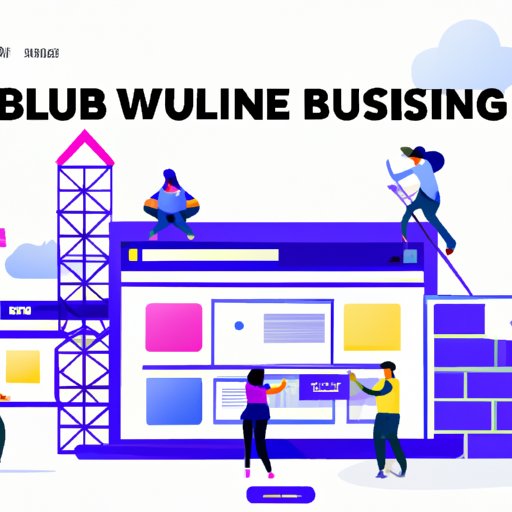
The Ultimate Guide to Building a Website for Your Business
In today’s fast-paced digital world, having an online presence is vital for businesses of all sizes. A website not only helps to attract and reach new customers, but it also promotes the business’s brand and mission. However, building a website can be a daunting task, especially for those who have no prior experience in web design or development. In this article, we will provide a step-by-step guide on how to build a website for your business, along with some best practices, case studies, video tutorials, and resources to make it easier for you to get started.
Step-by-Step Guide
1. Domain Registration
A domain name is your website’s address, and it needs to be unique and easy to remember. To choose a domain name, decide on a name that accurately reflects your business and brand. Try to keep it simple, memorable, and relevant to your business. Once you have decided on a name, you can register it with a domain registrar such as GoDaddy or Namecheap.
2. Hosting
Hosting is a service that allows you to store your website files on a server and make it accessible to users worldwide. When choosing a hosting provider, consider factors such as uptime, speed, security, and customer support. You can purchase a hosting plan from a reputable hosting provider such as Bluehost or SiteGround that offers a range of hosting options for businesses of all sizes.
3. Content Creation
Content is the heart of your website, and it needs to be engaging, informative, and relevant to your business and customers. Before creating content, determine what information your customers need and how your business can solve their problems. This will help you craft content that resonates with your customers and reflects your brand’s mission. Make sure your content also meets Search Engine Optimization (SEO) requirements so that it can be found by potential customers.
4. Website Design
Website design is an essential aspect of building a website. Choose a template that matches your brand’s style and vision, and make sure it is mobile-responsive. A user-friendly website design can improve customer experience and drive conversions. A simple and clean design is often better than a cluttered design with too much information.
Best Practices
1. Choosing a Template
When choosing a template, ensure it aligns with your brand’s style and reflects your business’s industry. Remember to select a mobile-responsive template to optimize your customer experience on mobile devices.
2. Creating Content
Craft content that is engaging, informative, and meets customers’ needs. Ensure that your content is optimized for SEO, including title tags, meta descriptions, and header tags. This makes it easier for potential customers to find your website via search engines.
3. Optimizing for Search Engines
SEO refers to optimizing your website and its content to rank better in search engine result pages. Take time to optimize your website for SEO, including using relevant keywords, creating a sitemap, and optimizing your page’s load time.
4. Engaging with Customers
Use social media to promote your website and engage with your customers. Social media platforms such as Facebook, Instagram, and Twitter can help you attract and interact with potential customers.
Video Tutorial
To make it easier for you to follow the step-by-step guide, we have created a video that walks you through each step. This video tutorial covers everything you need to know about building a website for your business, from registering your domain to designing your website’s layout and creating compelling content. The voiceover instructions provide added guidance on best practices throughout the process.
Case Studies
Case studies are a great way to learn from other businesses’ successes and failures. We have included two case studies of businesses that have successfully built their websites, highlighting their challenges, successes, and advice for others. These real-life examples can inspire you to create a website that fits your business model and goals.
Tools and Resources
To simplify the website-building process, we have compiled a list of recommended website builders, content management systems, and design resources. These tools and resources can help you create a website quickly and easily, even if you have no prior web design or development experience. Website builders such as Wix and Squarespace offer intuitive drag-and-drop interfaces, while content management systems (CMS) such as WordPress offer more flexibility in terms of customization.
Conclusion
Building a website is a crucial step in establishing your business’s online presence and attracting new customers. By following our step-by-step guide and implementing best practices, you can create a website that reflects your business’s brand, mission, and values. Remember to engage with your customers via social media, optimize your website for SEO, and update your content regularly to keep your website fresh and relevant.
With the right hosting provider, website builder, and design template, you can create a website that supports your business’s goals and ambitions. Start building your website today and take the first step toward growing your brand and reaching new customers online.





